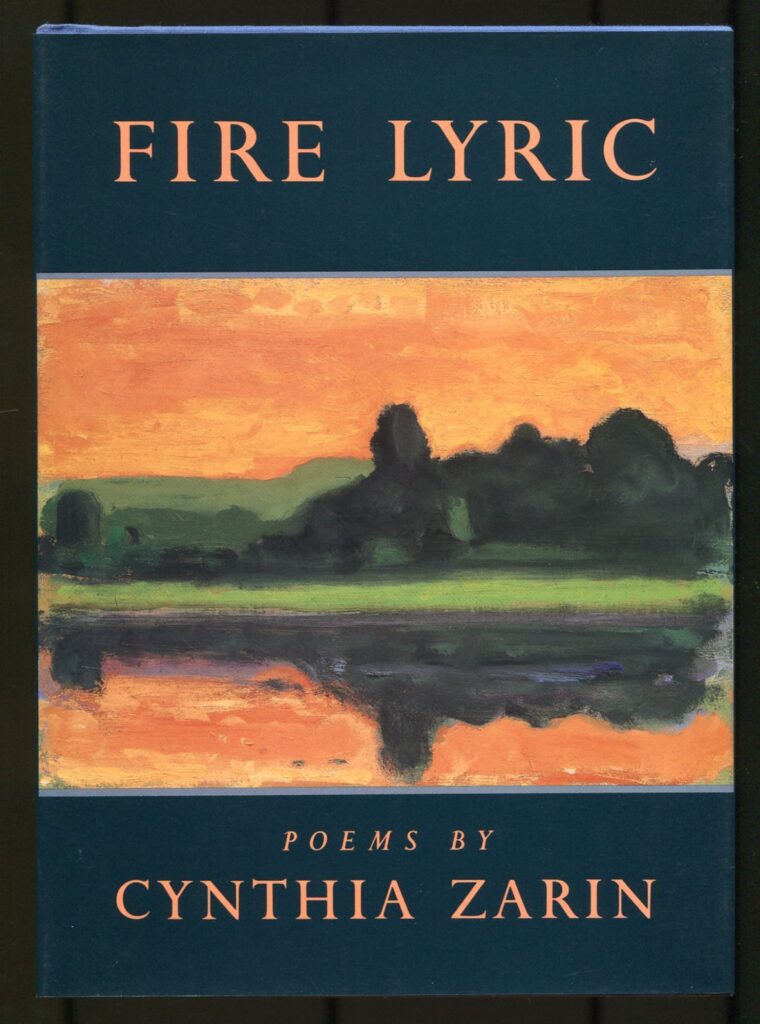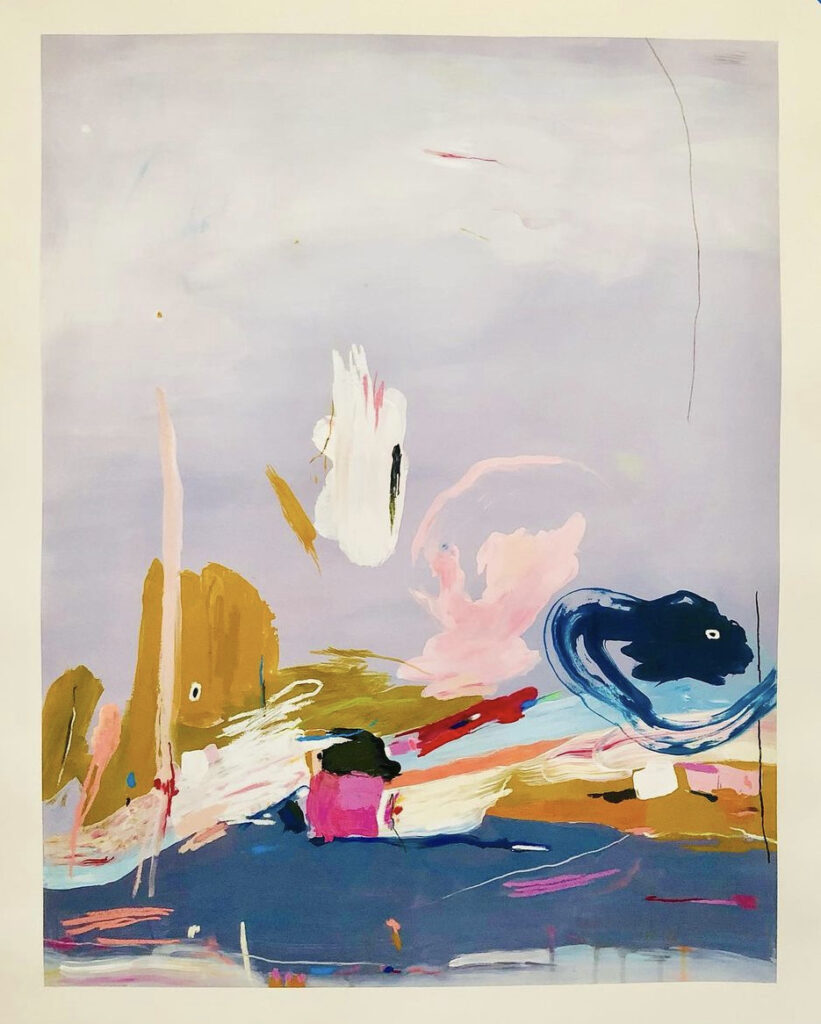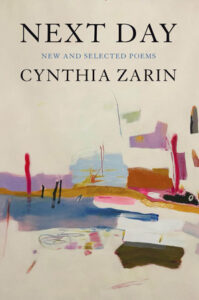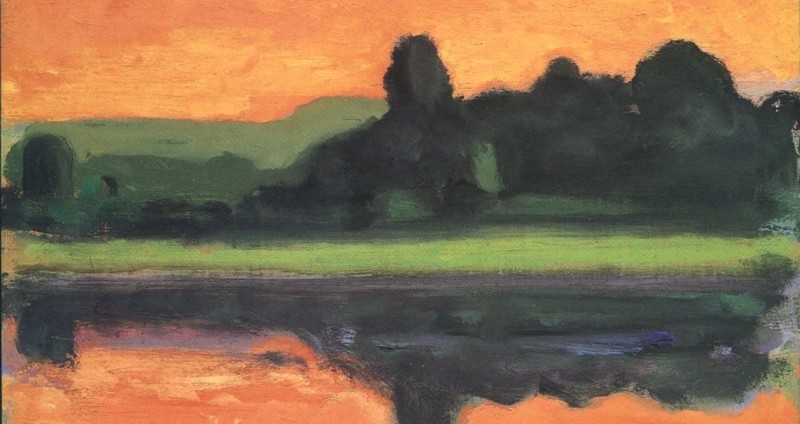On the occasion of the publication of her new poetry collection, Next Day: New and Selected Poems (Alfred A. Knopf) the poet Cynthia Zarin sat down with her daughter, Rose Seccareccia, to talk about using her painting “Pamet River” for the cover of the book, and keeping art in the family
Article continues after advertisement
*
Cynthia Zarin: Rose, my first two collections of poetry had paintings on their jackets by your father, Michael Seccareccia. Mike and I worked closely beside each other in our early days together and choosing his paintings for Fire Lyric and The Swordfish Tooth were important moments in that life. I thought it would be wonderful to make a kind of full circle—especially since this book, Next Day, is a “new and selected” volume and so the poems span a time from before you were born, to now—and have your work on the cover this time around. Do you think that we influenced you to become a painter?
I think painting and poetry and plays and books are simply part our household.
Rose Seccareccia: The Swordfish Tooth was published before I was born, and when Fire Lyric came out I was probably one or two years old. But the covers of those books by are really paramount in my mind. I think of them often. As far as influences? In my opinion you are one of our great poets and my father is an extraordinary painter; I do like to think that you are both present in my work in some ways. To ask how I became an artist is like asking me how did I come to have brown hair; to me it’s part of our family.
CZ: When you were very tiny, we used to take you to the Metropolitan Museum and have you look at the Italian paintings, and the Quattrocento paintings especially. While we don’t sit and have particular discussions, I think painting and poetry and plays and books are simply part our household.

RS: I think that you and Dad gave me an incredible frame of reference. Dad took me to the Met, and he taught me how to draw. He influenced so much of the way that I see. Similarly, when I was a child you read aloud to me all the time. I think as a family, we have a series of touchstones that form a vernacular. I would say, for lack of a better word, that it’s a kind of tapestry that we’re all woven into.
CZ: Yes. You went so often to the Metropolitan Museum, and MOMA, where as a child I was taken almost every weekend by my grandfather, who was a painter. The world of painting is very familiar—even familial—to me. You are is named for my grandmother, who died before she was born and Dad’s grandmother was also named Rose. My grandmother Rose was an actress in the Yiddish theater—we have a wonderful photograph of her as Ophelia. And then when you were a teenager you played Juliet in “Measure for Measure,” in a Theatre for a New Audience production….
RS: We’re very close, in many ways, and it’s not surprising we have similar references in our work. I wouldn’t say, necessarily, that your work inspires mine; instead, I’d say that in the sense of family life and shared memory we draw on a similar pool, of course from different perspectives. I think your work is extraordinary your novel is extraordinary—you know, I don’t read all of your work!
CZ: (laughing) Let’s leave that out!
RS: But my favorite poem is the one for me—
CZ: Yes, “Song.” It was written for you before you were born.
My heart, my dove, my snail, my sail, my
milktooth, shadow, sparrow, fingernail,
flower-cat and blossom-hedge…
CZ: The painting on the cover is called “Pamet River”—the Pamet is in Truro on Cape Cod, and leads out to Cape Cod Bay: many of the poems in the book are based on experiences on Cape Cod. As you know, your grandparents began taking me there when I was very small child. I’m imprinted with that landscape. And I took you and your sisters and brother there every summer, and often during the winter as well. What would you say inspires you, as a painter?
Writing is a kind of transcription, of phrases and images, to me.
RS: When I approach a painting, I think about memory and space. And when I think about this series of paintings that were centered around Cape Cod—particularly in Truro and Wellfleet and Provincetown, places you also speak about in your work—I’ve painted in many layers, layers that mimic in some ways how I remember these spaces, so my works are often somewhat fragmented; as you say, they are somewhat abstracted landscapes, both in the physical sense and in thinking about memory as a copy of experience, and sometimes a copy of itself.
CZ: I want to pick up on that, about memory being copied, and how you keep building on an original thought and it keeps expanding and evolving. I was talking the other day about this book’s title Next Day, which is also the title of one of the new poems, and I realized it was inspired in part by the titles of Grace Paley’s short story collections, which I so admire. They speak to a New York life, whether it’s in the Village or where we are talking together now, in West Harlem: “The Little Disturbances of Man,” “Enormous Changes at the Last Minute,” and “Later That Same Day.” In some way, my title Next Day, speaks to that idea: that there’s a continuous dialogue.
RS: Two of your books have covers by the painter Alex Katz, Inverno and An Enlarged Heart. Do you think in visual terms when you’re writing poetry and prose?
CZ: It’s been wonderful to have those paintings on the jackets, “Red Coat” (1993) and “Couple” (1996). Alex Katz, is someone I greatly admire; his figurative work is also in a way abstract, and leaves space for conjecture, which I think poems can do. I certainly think in images when writing prose and poetry. I’m not sure if that’s true in one more than the other; writing is a kind of transcription, of phrases and images, to me. Several poems, especially in The Watercourse and then in my most recent collection, Orbit, were based on paintings. For instance, a number of paintings appear in the long poem “Sunday”: two paintings by Andrew Wyeth, one by Bellows, and Botticelli’s La Primavera, which is in the Uffizzi. The poem “The Mechanical Art” is based on the life of Seurat.
 Ghosts and Fishes, by Rose Seccareccia
Ghosts and Fishes, by Rose Seccareccia
As you know, I love the series of your paintings of the landscapes of Truro and Wellfleet. This is my fifth book with my wonderful editor, Deborah Garrison, to whom Next Day is dedicated. For Deb and me, it has become second nature to share ideas and we have a ongoing back in forth, certainly when we are readying a book for publication, but in between, too. She knows your work, and as I remember it, I sent Deb a few images, and then we submitted a selection to John Gall, who designed the cover, leaving the choice to him. And he chose “Pamet River.” I find it very moving. I think the cover is just beautiful.
__________________________________

Next Day: New and Selected Poems by Cynthia Zarin is available from Alfred A. Knopf, an imprint of Knopf Doubleday Publishing Group, a division of Penguin Random House, LLC.
*
